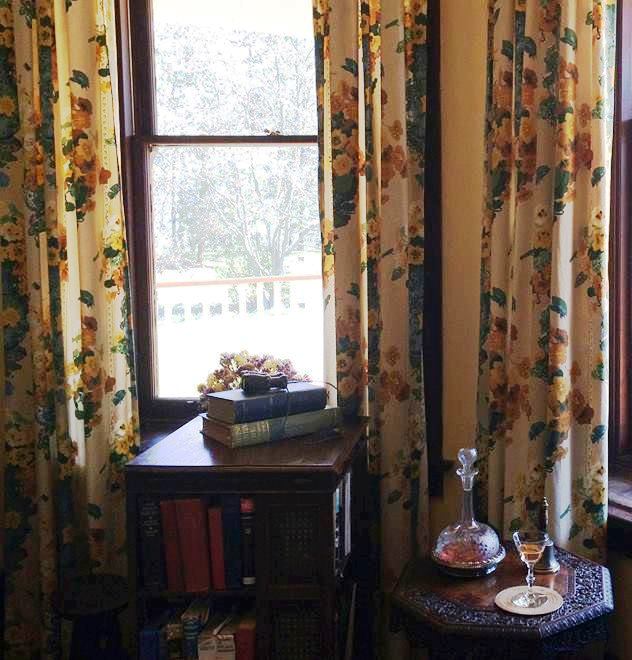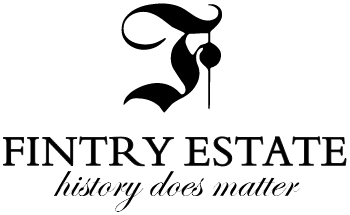Greetings all,
Heritage Week (February 15th-21st) will soon be upon us and I encourage you to check out the Heritage BC website at www.heritagebc.ca/events-activities/ where you can find out what’s happening this year, also webinars, their Annual Conference and the presenting of this year’s Heritage Awards. For a list of local events, please visit https://www.facebook.com/heritageweekokanagan.
Our application to Canada Summer Jobs for two students for the summer has been submitted so we are hopeful that (a) we will be able to have tours, and (b) that we get this funding. Last summer’s students were an incredible asset and certainly took a load off us volunteers.
One year into pandemic and although we have a way to go still, we must continue to adhere to the protocols, be patient and hopefully come out at the other end of this unscathed. We are certainly hoping that the Fintry Manor House and barns will be open for tours this coming season; Fintry Fairs ….? …. probably not in May, but fingers crossed for July and September.
Dan, our Curator has his fingers crossed too that tours will be back to normal and is offering up the following little tidbit for you to take a closer look when next you visit ……
“We really hope to be able to open the smaller rooms in the Manor House during the upcoming summer season, and if so, visitors should take a good look at the curtains in Mrs. Dun-Waters’ sitting room. They have a pattern of nasturtium flowers in various tones of yellow and blue. The fabric is new, but the design dates to 1924, the year in which the Manor burned and was re-built. Such material would have been hot off the press when the house was re-furnished.
John Sylvester Wheelwright was the artist who created the pattern, one of over 1,500 that he produced in Britain between 1904 and 1954. He was born in 1885 to a family with a strong artistic tradition. His brother, Roland was an Associate member of the Royal Academy of Art, and his mother was also an artist. He apprenticed to the Silver Studios in 1904, a business that operated until 1963, producing some 30,000 patterns for wallpapers and fabrics. Wheelwright was not limited to such designs however, but was also known as an aviation designer for the Royal Air Force, and he developed the earliest silk screen printing machinery. After his death, the family emigrated to Canada, in 1962, and at that time shipped a large collection of original painted designs to Vancouver. Kelowna soon became the home of David and Patricia, his son and daughter-in-law. In 1992, the Kelowna Museum held an exhibition of a selection of these paintings, which resulted in a published catalogue, ” Kaleidoscope ” (generously sponsored by Color Your World, Kelowna)
In 2003, Patricia Wheelwright donated the fabric used to make the Fintry curtains from a roll of newly printed John Sylvester designed material. The late Mrs. Hazel Bruce created the curtains under difficult circumstances, as the layout space on the basement floor was largely occupied by about 25 cages of small animals and birds that had been evacuated from homes in Kelowna due to the Okanagan Mountain Fire, then raging to the south and east of the city.
The concept of printing designs on woven fabric had its origins in India and Indonesia. It took some considerable time before the techniques became established in Europe, particularly in England due to the imports and influence of the East India Company. These curtains, (which, incidentally at Fintry would have been referred to as such, rather than the newer, transatlantic ‘drapes’) have a convoluted history involving many people and places. Nasturtiums, Tropaeolum majus, are well known and reliable plants for hanging baskets and flower pots. They are native to Peru, and were first cultivated in Europe in 1686.

We are working with the Okanagan First Nation to create a plaque that will inform the visiting public about the earliest use and name of the place we know as Fintry. More details of this will appear in a future Octagon. The ‘Fintry’ name, like so many others was a transplant from Scotland (where there are at least 3 of them). Across the Lake from Fintry, Mount Spion Kop overlooks Okanagan Centre in Lake Country. That name was brought back from South Africa after the Boer War, as returning local soldiers remembered their ordeal in 1900. But ever wonder where the name ‘Canada’ came from? There has been much discussion about the name of our country, and some far-fetched explanations have been suggested. It does not in fact require much to arrive at what is most likely the real answer. The equipment needed is an early map, (a copy will do) of North America and a Spanish dictionary. Turn the map to ‘face’ Europe, so that north is to the right, and south to the left. Many maps were drawn that way before it became standardized to have north at the top of the page. A pair of names will be seen on a number of these maps, On the left, ‘Florida’, and on the right ‘Canada’. Now the dictionary, which will reveal that ‘florido(a) means ‘florid’, ‘flowery’ or ‘in bloom’. ‘Cana’ means ‘white’, ‘grey’ or ‘hoary’ especially with reference to hair. ‘Canas’, white hairs. The opposing environments are thus described, ‘flowery’ and ‘whitened’ by the mapmakers who were informed by the early voyagers across the Atlantic. It may surprise some that our country in fact has a Spanish name.”
“Ay de mi Alhama”
Alli hablo un Alfaqui de barba crecida y cana . . .
“Alas for my Alhama”
Then there spoke an Alfaqui (Moorish Elder) with a long hoary beard . . .
Romance del rey moro que perdio Alhama (Spanish ballad…circa 1490)
On that note, I wish you all good health!
Kathy Drew,
Friends of Fintry Provincial Park
